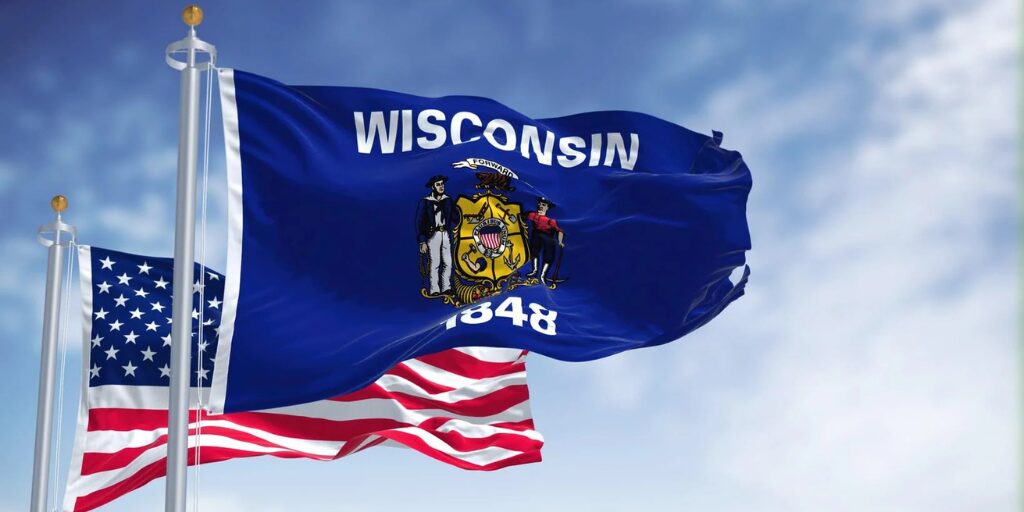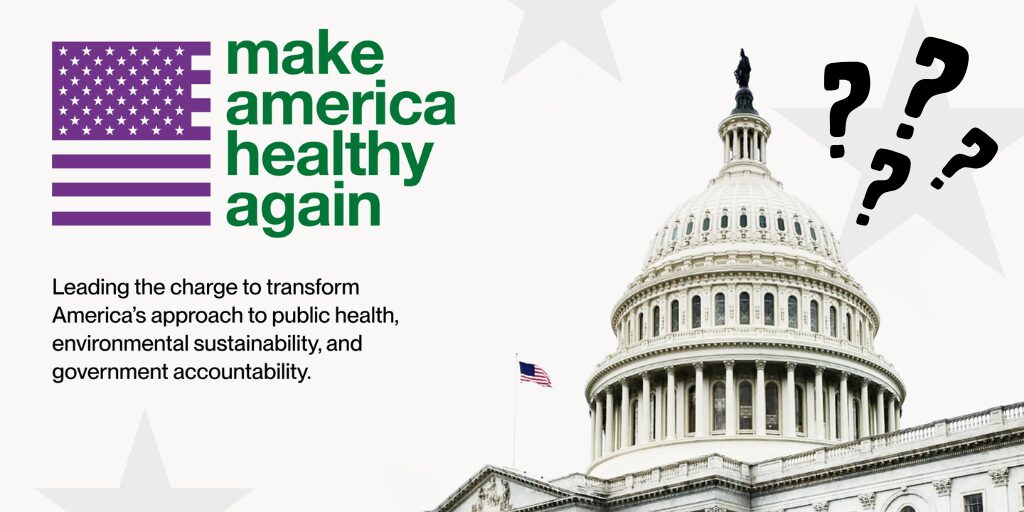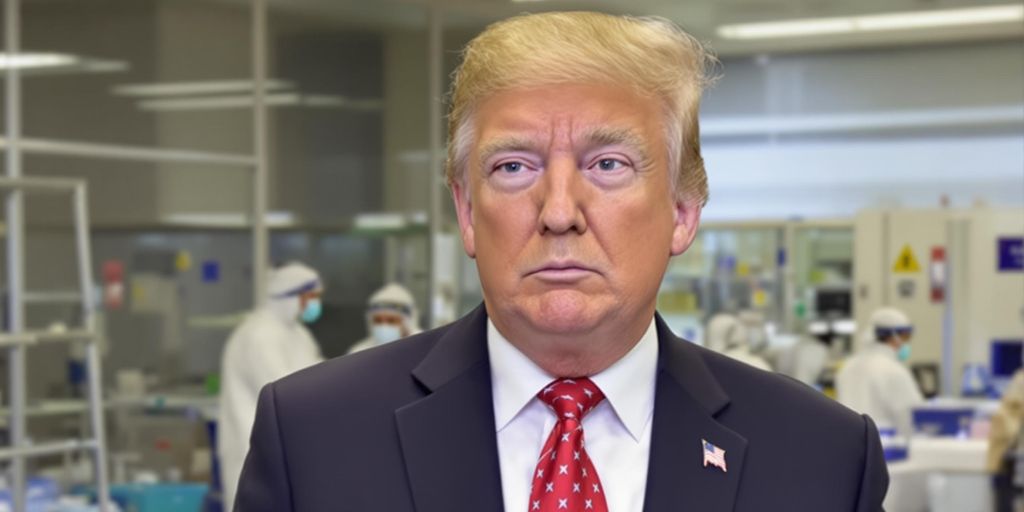The recent Wisconsin election results have sparked significant conversations about their implications for the future, especially as we look toward the 2025 elections. With a liberal majority retained in the state Supreme Court and a surge in voter engagement, these outcomes could reshape political strategies for both parties. This article breaks down the key takeaways from the election and what they might mean going forward.
Key Takeaways
- The Wisconsin Supreme Court’s liberal majority is likely to influence future rulings on critical issues like voting rights and abortion.
- Democrats have gained momentum, signaling potential challenges for Republicans in upcoming elections, especially in light of Trump’s influence.
- Record campaign spending highlights the increasing financial stakes in elections, with significant contributions from high-profile donors like Elon Musk.
- High voter turnout in the spring elections indicates strong engagement among Democratic voters, suggesting a shift in voter enthusiasm.
- Republicans face challenges ahead, particularly in adapting to the changing political landscape and addressing voter ID laws that may impact their base.
Liberal Majority Maintained In Wisconsin Supreme Court
The Wisconsin Supreme Court race was a big deal, and Susan Crawford’s win means the court keeps its 4-3 liberal majority. This is a continuation of the balance that’s been in place since 2023. It’s not just about this one election; it has implications for future cases and how voters feel about the court’s role.
Impact Of Crawford’s Victory
Crawford’s victory solidifies the liberal majority, which could lead to significant changes in state policies. This win prevents a conservative takeover of the court, which would have dramatically shifted the legal landscape. It’s a sigh of relief for some and a disappointment for others, but it definitely sets the stage for some interesting legal battles ahead. The Wisconsin Supreme Court election was closely watched.
Significance For Future Rulings
With the liberal majority intact, we can expect rulings that align with progressive priorities. This could include issues like abortion rights, redistricting, and voting regulations. It’s not just about individual cases; it’s about the overall direction of the state’s legal framework. Here are some areas to watch:
- Voting rights cases
- Challenges to legislative maps
- Environmental regulations
Voter Sentiment On Judicial Independence
This election was also a gauge of how voters view judicial independence. Are judges seen as neutral arbiters, or are they viewed as political actors? The high level of engagement suggests that voters are paying attention to these races and understand their importance. It’s a sign that people care about who’s making decisions on the court and what values they represent. The election results are in.
The perception of judicial neutrality is increasingly challenged as judicial elections become more politicized. This trend raises questions about the long-term effects on public trust in the judiciary and the potential for decisions to be influenced by political considerations rather than legal principles.
Democratic Momentum Following Election Results
National Implications For Democrats
Okay, so the Wisconsin results? They’re a shot in the arm for Democrats, no doubt. After months of internal battles and, let’s be honest, some pretty rough polling numbers, this win gives them something to point to. It’s proof that their message can still resonate, especially when they focus on issues that really matter to voters. The win has boosted Democrats nationally as they contend with intraparty squabbling on the direction of the party going into the 2026 midterms. The interest in Tuesday’s race not just from voters, but also major Democratic donors, suggests a large influx of cash is likely to be invested in both sides at a time when the president’s party is at risk of heavy losses amid pushback by voters.
Referendum On Trump Policies
Look, there’s no getting around it: this election felt like a test of Trump’s influence, and by extension, the policies he champions. Crawford was against an abortion ban at the court, that Jill Underly, the state schools chief, ran against the dismantling of Department of Education, and that they both were against Musk casting “aside any check and balance.” The fact that the Democratic candidate won suggests voters are pushing back against the direction the country’s headed. It’s not just about Wisconsin; it’s a signal to the rest of the nation. With the Badger State race as a referendum on Musk and Trump policies, the outcome of Tuesday’s election could also serve as a cautionary tale for Republicans as they prepare for the 2025 gubernatorial races and 2026.
Voter Enthusiasm Indicators
Turnout was huge for a spring election, especially a judicial one. We’re talking potentially over 2.4 million voters. That’s way more than the last Supreme Court race in 2023. This surge, coupled with Crawford’s strong performance in key areas like Dane County, indicates a strong mobilization among Democrats and Democratic-leaning voters, driven by concern about the policies of the new Trump administration and opposition to Musk’s involvement. It also suggests broader interest from the Wisconsin electorate about judicial independence on issues like abortion rights and congressional redistricting.
It’s not just about the numbers, though. It’s about the energy. People were fired up, ready to vote. That kind of enthusiasm is contagious, and it could be a major factor in upcoming elections.
Financial Dynamics Of The Election
Record-Breaking Campaign Spending
Wow, this election was expensive. The Wisconsin Supreme Court race shattered records, with total spending estimated to be over $90 million. It’s just wild to think about that much money being poured into a single judicial election. You have to wonder where all that cash came from and what kind of influence it buys.
Influence Of Major Donors
It’s no secret that big money plays a big role in politics, and this election was no exception. A lot of the spending came from major donors on both sides. Elon Musk, for example, threw a ton of money behind the conservative candidate. It makes you think about how much these big donors actually care about Wisconsin, or if it’s just part of some bigger game they’re playing. It’s hard to ignore the impact of these deep pockets on the outcome.
Cost Per Vote Analysis
Okay, so if we’re talking about $90 million spent and roughly 2.4 million voters turning out, that’s like $37.50 per vote! I mean, that’s a super rough estimate, but it gives you an idea. It’s kind of insane when you break it down like that. What could that money have done if it was spent on something else? Food for thought.
It’s easy to get lost in the big numbers, but it’s important to remember that this money represents real resources that could have been used for other things. The sheer scale of spending raises questions about the priorities of our political system and whether money is drowning out the voices of ordinary people.
High Voter Engagement In Spring Elections
Turnout for this spring’s elections was surprisingly high, especially considering it wasn’t a presidential election year. Initial estimates suggest that over 2.4 million Wisconsinites cast their ballots, a number that far exceeds typical spring election turnouts. This level of engagement signals a heightened interest in state and local politics, and it could have significant implications for future elections.
Turnout Statistics
The numbers speak for themselves. Compared to the 2023 State Supreme Court race, this election saw a substantial increase in voter participation. This surge suggests a growing awareness and concern among voters regarding the issues at stake. While it’s still lower than the turnout seen in the 2024 presidential election, the level of engagement is remarkable for an off-year election. Here’s a quick look at the numbers:
| Election Type | Estimated Turnout |
|---|---|
| 2025 Spring Election | 2.4 Million+ |
| 2023 Supreme Court Race | Significantly Lower |
| 2024 Presidential Election | Higher |
Demographic Trends In Voting
Analyzing the demographic breakdown of voters reveals some interesting trends. Early data suggests a strong turnout among younger voters and college-educated individuals. This could be attributed to increased mobilization efforts and a growing awareness of the importance of local elections. The realignment of college-educated voters is helping Democrats in these kinds of elections. Understanding these demographic shifts is crucial for both parties as they prepare for future campaigns.
Mobilization Strategies For Democrats
Democrats appear to have successfully mobilized their base, particularly in key areas like Dane County. This mobilization was likely driven by concerns about the policies of the new Trump administration. Effective strategies included grassroots organizing, targeted advertising, and leveraging social media to reach potential voters. The Harvard Kennedy School emphasizes experiential learning, which is key to understanding voter behavior. These strategies could serve as a blueprint for future Democratic campaigns in Wisconsin and beyond.
The high voter turnout in this spring’s elections underscores the importance of every vote. It demonstrates that people are paying attention and are willing to make their voices heard, even in non-presidential election years. This level of engagement is a positive sign for democracy and suggests that voters are becoming more active and informed participants in the political process.
Challenges For Republicans Post-Election
Setback For Trump And Musk
The Wisconsin election results definitely sting for Republicans, and maybe even more so for Trump and Musk. Musk went all-in on this race, and Crawford’s loss is a direct hit to his political influence. It’s a reminder that even with deep pockets and high-profile endorsements, you can’t always sway voters. The energy seems to be with the out-party, which historically does well in midterm elections. world’s richest man
Implications For 2025 Gubernatorial Races
Looking ahead to the 2025 gubernatorial races, the Wisconsin results could be a wake-up call for the GOP. The Democratic momentum is real, and Republicans need to figure out how to counter it. Are they going to double down on Trump-era policies, or try a different approach? The answer to that question could determine the outcome of those races. The MAGA backlash is real.
Voter ID Laws And Their Impact
Voter ID laws continue to be a hot topic, and their impact on elections is always debated. Did these laws suppress turnout, particularly among certain demographics? It’s a question worth exploring, and the answer could have implications for future elections. It’s important to analyze the demographic trends in voting to understand the full picture.
The Wisconsin election serves as a stark reminder that voter engagement is high and that the electorate is closely watching the actions of both parties. Republicans need to reassess their strategies and messaging to connect with voters and address their concerns effectively.
Key Takeaways From The Wisconsin Election Results
Lessons For Future Elections
The Wisconsin election offered some pretty clear lessons. First, money isn’t everything. Despite record-breaking spending, the candidate who spent the most didn’t win. This suggests that voters are paying attention to more than just campaign ads. It’s also a reminder that grassroots efforts and connecting with voters on a personal level still matter. The economic factors influencing voter decisions are complex and multifaceted.
Comparative Analysis With Other States
Wisconsin’s election results can be compared to other recent elections across the country. For example, looking at similar judicial races in other states can provide insights into whether the trends observed in Wisconsin are part of a broader national shift. It’s also useful to compare voter turnout rates and demographic trends to see how Wisconsin stacks up against other states. This kind of analysis can help us understand whether Wisconsin is an outlier or a bellwether. Understanding these differences is key.
Potential Shifts In Voter Behavior
One of the most interesting takeaways from the Wisconsin election is the potential for shifts in voter behavior. Did certain demographics turn out in larger numbers than expected? Did voters who typically vote Republican cross over to support the Democratic candidate? These are important questions to consider. It’s possible that we’re seeing a realignment of voters in Wisconsin, driven by issues like abortion rights, judicial independence, or dissatisfaction with the direction of the Republican Party.
The election results suggest that voters are increasingly willing to cross party lines to support candidates who align with their values, regardless of party affiliation. This could have significant implications for future elections in Wisconsin and across the country.
Here are some potential shifts:
- Increased turnout among young voters
- Higher support for Democrats in suburban areas
- Greater emphasis on state-level issues
Significance Of The Wisconsin Supreme Court Race
Judicial Elections As Political Barometers
The Wisconsin Supreme Court race served as a major political bellwether. Judicial elections, while technically non-partisan, often reflect the broader political sentiments of the electorate. The intense focus and record-breaking spending on this race underscore its importance beyond just the legal realm. The results can be interpreted as an indicator of voter priorities and a potential preview of upcoming elections. It’s like everyone was watching to see which way the wind was blowing, and the results definitely sent a message.
Long-Term Effects On State Policies
The composition of the Wisconsin Supreme Court has profound and lasting effects on state policies. With Crawford’s victory, the court maintains its liberal majority, influencing decisions on key issues like redistricting and voting rights. This means that for the foreseeable future, the court is likely to lean in a particular direction on contentious legal matters. The implications extend to environmental regulations, labor laws, and other areas of state governance. The court’s decisions can shape the legal landscape of Wisconsin for years to come.
Public Perception Of Judicial Neutrality
Public perception of judicial neutrality is increasingly challenged by the politicization of judicial elections. The Wisconsin Supreme Court race highlighted the extent to which judicial candidates are backed by political parties and interest groups. This can erode public trust in the impartiality of the judiciary. It raises questions about whether judges can truly be neutral when they are elected through highly partisan campaigns. People are starting to wonder if judges are really just politicians in robes. Here are some factors influencing public perception:
- Campaign spending and advertising.
- Endorsements from political figures.
- Ideological alignment of candidates.
- Media coverage of judicial races.
The increasing politicization of judicial elections poses a threat to the integrity of the judicial system. When judges are perceived as partisan actors, it undermines the public’s confidence in their ability to fairly administer justice. This can have far-reaching consequences for the rule of law and the stability of our democracy.
In the end, the Wisconsin election results tell us a lot about where things might be headed. The win for Susan Crawford keeps the state Supreme Court in liberal hands, which could mean big changes for issues like voting rights and redistricting. For Democrats, this is a shot in the arm as they gear up for the 2026 midterms. They’re feeling more confident after this win, especially with the high voter turnout showing that people are engaged. On the flip side, this is a wake-up call for Republicans, especially with Trump and Musk backing a candidate who lost by a significant margin. It’s clear that the political landscape is shifting, and both parties need to pay attention to what voters are saying. As we look ahead to 2025 and beyond, these results might just be the first signs of what’s to come.
Frequently Asked Questions
What was the outcome of the Wisconsin Supreme Court race?
Susan Crawford won the election, keeping a liberal majority in the Wisconsin Supreme Court.
Why is the Wisconsin Supreme Court important?
The court can influence key issues like voting rights and abortion laws.
How did the election results affect the Democratic Party?
The results gave Democrats a boost and showed strong voter support against Trump’s policies.
What were the financial dynamics of the election?
The election saw record spending, with over $90 million spent on campaigns.
How did voter turnout compare to previous elections?
Turnout was very high, with over 2.4 million voters participating, which is more than in past spring elections.
What challenges do Republicans face after this election?
Republicans must address setbacks from the election and prepare for future races, especially with voter ID laws.




